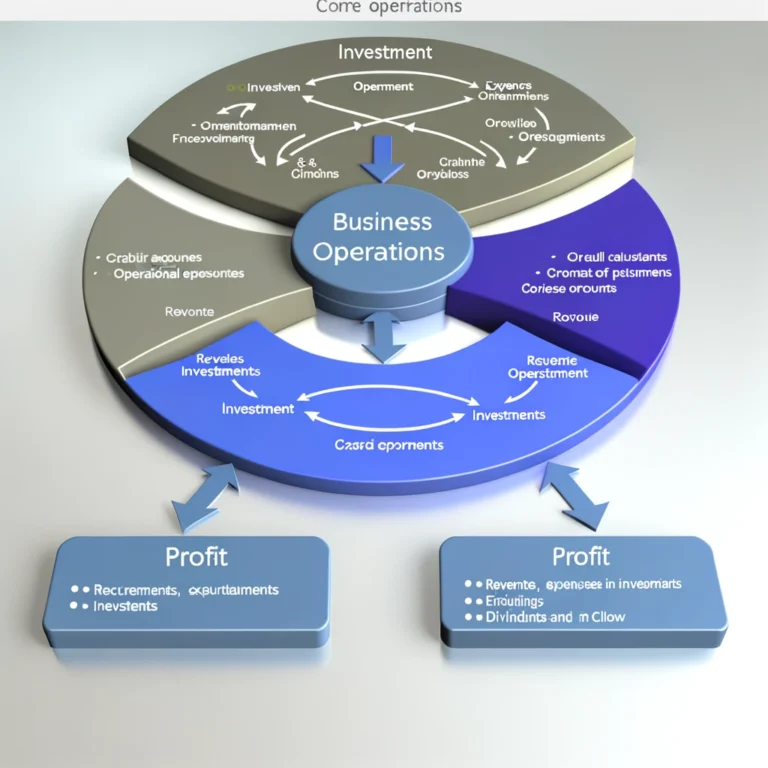Understanding the intricate relationship between investment, profit, and cash flow is fundamental for any business, especially in the context of IB Business & Management studies. This detailed exploration delves into these concepts, underlining their interconnectedness and impact on business sustainability and growth. The discussion will be exemplified with a practical industry example to provide a clear understanding of these financial dynamics.
The Relationship Explained
Investment is the allocation of resources, typically financial, into something with the expectation of generating future returns. For businesses, investments can range from acquiring new assets, such as machinery and technology, to entering new markets. These investments incur initial costs but are essential for future profitability and growth.
Profit is the financial gain realized when the revenues generated from business activities exceed the expenses, costs, and taxes needed to sustain the activity. Profitability is a key indicator of business success, reflecting the efficiency with which a company utilizes its resources.
Cash Flow represents the net amount of cash being transferred into and out of a business. It’s a crucial indicator of a business’s liquidity, operational efficiency, and short-term viability. Positive cash flow ensures a business can meet its financial obligations, invest in new opportunities, and provide returns to shareholders.
Interconnectivity of Investment, Profit, and Cash Flow
The relationship between these three elements is cyclical and dynamic. Investments are made with the aim of generating future profits. However, the initial outlay can significantly impact cash flow, particularly if the returns on investment (ROI) take time to materialize. Profits, in turn, can be reinvested into the business to foster further growth, affecting cash flow again. Effective cash flow management ensures that a business can sustain its operations, invest in new opportunities, and realize profits over time.
Investment decisions directly influence a company’s cash flow. Major startup costs, such as rent, fixed assets, and training, require substantial upfront investment, reducing available cash. While these investments may lead to profitable operations, the immediate impact on cash flow can be significant. Conversely, positive cash flow enables businesses to invest in opportunities that can generate future profits, highlighting the importance of managing cash flow to sustain investment activities and realize profitability.
Industry Example: The Tech Startup
Consider a tech startup, “InnovateTech,” embarking on the development of a revolutionary software product. The initial phase involves significant investments in research and development (R&D), hiring talent, procuring technology, and market research. These startup costs strain InnovateTech’s cash flow, as substantial funds are diverted toward covering these expenses before any revenue is generated.
As InnovateTech launches its software, it begins to generate revenue, marking the transition from investment to realizing profits. However, the high initial costs and ongoing operational expenses mean that actual profitability may not be achieved immediately. During this phase, managing cash flow becomes paramount to sustain operations, fund marketing efforts, and further product development.
InnovateTech’s situation illustrates the delicate balance between investment, cash flow, and profitability. The initial negative cash flow from heavy investments in the startup phase gradually improves as the product gains market acceptance and revenues start to exceed operational costs, leading to profitability. Effective cash flow management, through measures such as cost control, efficient receivables management, and strategic reinvestment of profits, enables InnovateTech to navigate the challenging initial phase, capitalize on investment opportunities, and ultimately achieve sustainable profitability.
Conclusion
The dynamic relationship between investment, profit, and cash flow is central to business operations and strategic decision-making. Investments are necessary for growth and profitability but can pose challenges to cash flow management in the short term. Achieving a positive cash flow enables businesses to seize new investment opportunities, fostering a virtuous cycle of investment, revenue generation, and profit realization. The example of InnovateTech underscores the importance of strategic investment and effective cash flow management in navigating the path from startup costs to profitability. In the context of IB Business & Management studies, understanding these financial principles equips students with the knowledge to make informed decisions that drive business success.






